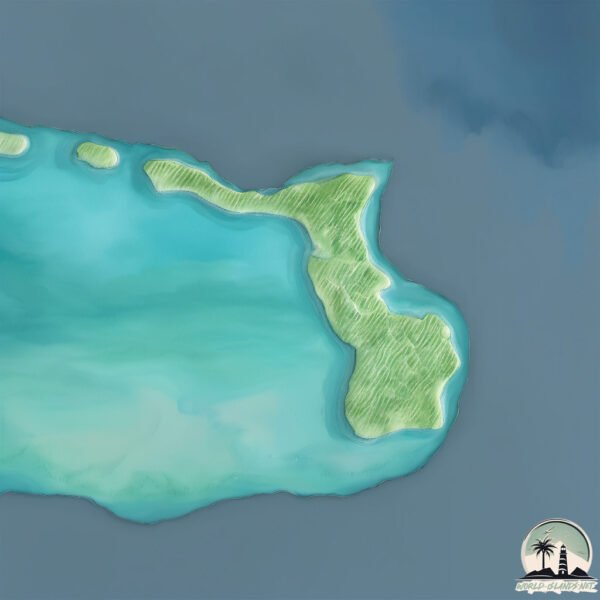Pulau Kalapu

Welcome to Pulau Kalapu, a Tropical island in the Banda Sea, part of the majestic Pacific Ocean. This guide offers a comprehensive overview of what makes Pulau Kalapu unique – from its geography and climate to its population, infrastructure, and beyond. Dive into the details:
- Geography and Size: Explore the island’s size and location.
- Climate and Weather: Weather patterns and temperature.
- Topography and Nature: Uncover the natural wonders of the island.
- Infrastructure and Travelling: Insights on reaching, staying, and making the most of your visit.
- News and Headlines: Latest News.
Geography and size of Pulau Kalapu
Size: 6.459 km²
Coastline: 17.9 km
Ocean: Pacific Ocean
Sea: Banda Sea
Continent: Oceania
Pulau Kalapu is a Small Island spanning 6.5 km² with a coastline of 17.9 km.
Archipel: Melanesia – A subregion of Oceania in the southwestern Pacific Ocean, including countries like Fiji, Solomon Islands, and Vanuatu, known for their diverse cultures and languages.
Tectonic Plate: Pacific – The world’s largest tectonic plate, covering much of the Pacific Ocean, known for the Pacific Ring of Fire with extensive seismic and volcanic activity.
The geographic heart of the island is pinpointed at these coordinates:
Latitude: -8.18140227 / Longitude: 128.78574336
Climate and weather of Pulau Kalapu
Climate Zone: Tropical
Climate Details: Tropical Savanna, Wet
Temperature: Hot
Climate Characteristics: Defined by distinct wet and dry seasons with high temperatures year-round. Pronounced rainfall occurs during the wet season, while the dry season is marked by drought.
Topography and nature of Pulau Kalapu
Timezone: UTC+09:00
Timezone places: Asia/Tokyo
Max. Elevation: 7 m
Mean Elevation: 0 m
Vegetation: Open Woodland
Tree Coverage: 44%
The mean elevation is 0 m. The highest elevation on the island reaches approximately 7 meters above sea level. The island is characterized by Plains: Flat, low-lying lands characterized by a maximum elevation of up to 200 meters. On islands, plains are typically coastal lowlands or central flat areas.
Dominating Vegetation: Open Woodland
Characterized by sparsely distributed trees with open canopy allowing sunlight to penetrate, supporting grasses and shrubs underneath. Often found in drier or transitional environments. Pulau Kalapu has a tree cover of 44 %.
Vegetation: 11 vegetation zones – Exceptionally Diverse Island
Islands with more than ten vegetation zones are among the most ecologically rich and varied in the world. These islands are akin to miniature continents, boasting an incredible array of ecosystems. The sheer range of habitats, from high peaks to deep valleys, rainforests to deserts, creates a mosaic of life that is unparalleled. They are crucial for conservation and ecological studies.
Infrastructure and Travelling to Pulau Kalapu
Does the island have a public airport? no.
There is no public and scheduled airport on Pulau Kalapu. The nearest airport is Jos Orno Imsula Airport, located 94 km away.
Does the island have a major port? no.
There are no major ports on Pulau Kalapu. The closest major port is SAUMLAKI, approximately 279 km away.
The mean population of Pulau Kalapu is 18 per km². Pulau Kalapu is Gently Populated. The island belongs to Indonesia.
Continuing your journey, Pulau Sermata is the next notable island, situated merely km away.
Pulau Nusi



Indonesia is classified as Emerging region: MIKT: Mexico, Indonesia, South Korea, and Turkey – Economies recognized for their development potential and emerging market status. The level of income is Lower middle income.
News – Latest Updates and Headlines from Pulau Kalapu
Stay informed with the most recent news and important headlines from Pulau Kalapu. Here’s a roundup of the latest developments.
Please note: The data used here has been primarily extracted from satellite readings. Deviations from exact values may occur, particularly regarding the height of elevations and population density. Land area and coastline measurements refer to average values at mean high tide.
